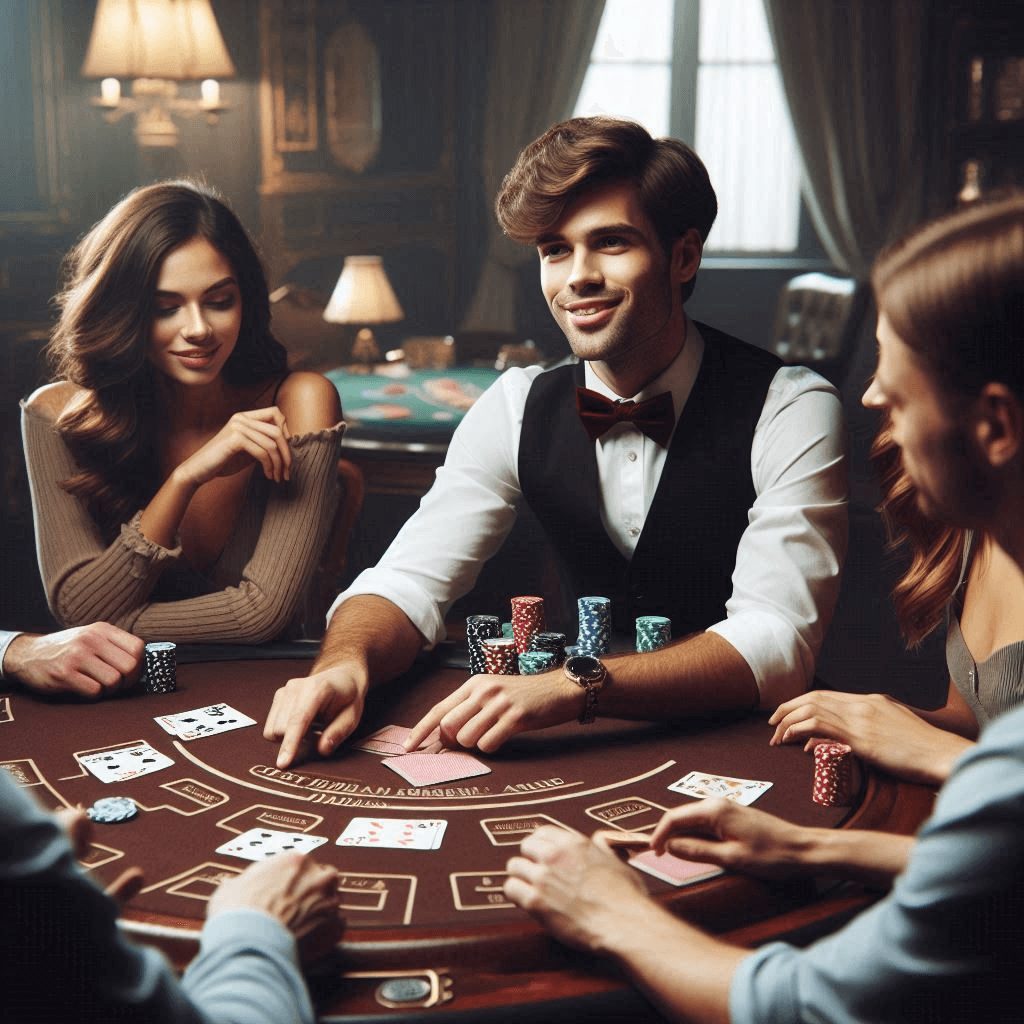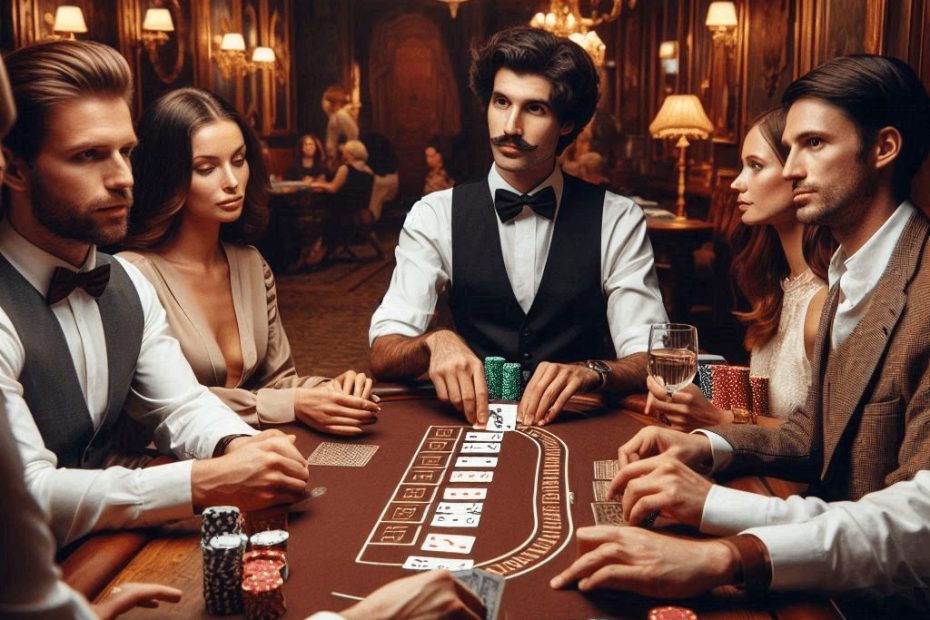European Blackjack, a captivating card game beloved by players worldwide, has a rich and fascinating history that is deeply rooted in the cultural tapestry of Europe. This article delves into the origins, evolution, and remarkable journey of European blackjack, exploring how it has become a fixture in the realm of casino entertainment and a cherished pastime for countless enthusiasts.
The Emergence of Blackjack in Europe
The origins of blackjack can be traced back to the early 17th century, when a primitive version of the game emerged in French and Spanish casinos. Initially known as “vingt-et-un,” meaning “twenty-one” in French, the game involved players attempting to reach a total card value of 21 without exceeding it. This simple yet engaging concept quickly gained popularity and spread across the European continent.
As the game evolved, it began to incorporate unique elements that distinguished it from its counterparts in other regions. One such distinguishing feature was the introduction of the “blackjack” hand, a combination of an ace and a face card (jack, queen, or king) that offered a higher payout. This special hand, known as a “natural,” became a defining characteristic of the game and contributed to its growing allure.
The Flourishing of Blackjack in European Casinos
Throughout the 18th and 19th centuries, blackjack continued to thrive in the vibrant casino environments of Europe. The game’s popularity was further bolstered by the establishment of renowned gambling hubs, such as Monte Carlo in Monaco and Baden-Baden in Germany, which attracted a diverse array of players and enthusiasts.
As the game spread across the continent, regional variations and nuances began to emerge. For instance, in Spain, the game was known as “juego de 21,” while in Italy, it was referred to as “ventuno.” These regional adaptations not only reflected the cultural influences of each country but also contributed to the game’s rich tapestry of traditions and playing styles.


The Technological Evolution of European Blackjack
The 20th century witnessed a significant transformation in the way blackjack was played and experienced in Europe. The advent of modern technology and the rise of electronic gaming devices revolutionized the industry, introducing new ways for players to engage with the game.
The introduction of automated blackjack tables, featuring computerized dealing and card recognition systems, streamlined the gameplay and enhanced the overall gaming experience. Players could now enjoy the thrill of blackjack without the need for a human dealer, allowing for faster-paced and more efficient gameplay.
Furthermore, the emergence of online casinos in the late 1990s and early 2000s brought European blackjack to a global audience. Players could now access their favorite version of the game from the comfort of their own homes, engaging in virtual table games and enjoying the same level of excitement and camaraderie as in traditional brick-and-mortar casinos.
The Enduring Allure of European Blackjack
Today, European blackjack continues to captivate players with its timeless charm and strategic depth. The game’s enduring popularity can be attributed to several factors, including its simplicity, the potential for lucrative payouts, and the element of skill and decision-making involved.
One of the key aspects that has contributed to the longevity of European blackjack is its ability to adapt to changing times and player preferences. As the gaming industry has evolved, blackjack has embraced technological advancements, offering players a diverse array of gameplay options, from live-dealer experiences to mobile-friendly platforms.
Moreover, the game’s rich cultural heritage and regional variations have fostered a sense of community and identity among blackjack enthusiasts. Players from different parts of Europe take pride in their local versions of the game, further strengthening the game’s appeal and fostering a vibrant playing community.
Conclusion
The inspiring history and evolution of European blackjack is a testament to the enduring appeal of this captivating card game. From its humble beginnings in the 17th century to its modern-day technological advancements, blackjack has woven itself into the fabric of European casino culture, captivating players with its strategic depth, lucrative payouts, and cultural nuances.
As the game continues to evolve and adapt to the ever-changing landscape of the gaming industry, it is clear that the allure of European blackjack will endure for generations to come. Whether it is the thrill of a high-stakes table game or the convenience of an online platform, the timeless charm of this iconic game will continue to draw players to the gaming tables, preserving its rich legacy and inspiring new generations of enthusiasts.
FAQs
-
What is the origin of the term “blackjack”?
The term “blackjack” is believed to have originated from the combination of an ace and a black-colored jack (either the jack of spades or the jack of clubs) in the game, which offered a higher payout. This special hand, known as a “natural blackjack,” became a defining feature of the game and contributed to its growing popularity.
-
How do the regional variations of European blackjack differ?
European blackjack has several regional variations, each with its own unique rules and nuances. For instance, in Spain, the game is known as “juego de 21,” while in Italy, it is referred to as “ventuno.” These regional adaptations often reflect the cultural influences and playing styles of each country, offering players a diverse range of gameplay experiences.
-
What are the key strategic elements of European blackjack?
European blackjack requires a combination of luck and skill. Players must make decisions based on the cards they are dealt, considering factors such as the dealer’s upcard, the potential for busting, and the optimal strategy for maximizing their winnings. The ability to make informed decisions and manage risks is crucial in the pursuit of success at the blackjack table.
-
How has the introduction of online casinos affected the popularity of European blackjack?
The emergence of online casinos has significantly expanded the accessibility and popularity of European blackjack. Players can now enjoy the game from the comfort of their own homes, engaging in virtual table games and live-dealer experiences. This has not only broadened the game’s global reach but also allowed for faster-paced gameplay and the incorporation of technological advancements, such as automated dealing and card recognition systems.
-
What is the role of regional variations in preserving the cultural heritage of European blackjack?
The regional variations of European blackjack have played a crucial role in preserving the game’s cultural heritage and fostering a sense of community among players. These unique adaptations reflect the local traditions, playing styles, and preferences of different European countries, allowing players to connect with their regional identities and take pride in their local versions of the game. This cultural diversity has contributed to the enduring appeal of European blackjack and the rich tapestry of traditions that surround it.
